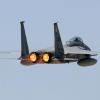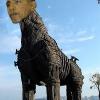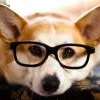Leaderboard
Popular Content
Showing content with the highest reputation since 11/14/2010 in Posts
-
Hello, my name is Max and I'm a senior in high school. Since everyone else is talking about the sports they play...I will too. My mother often asks me to stop playing tennis because it is such a physical sport, but I rarely listen to her so I continue to play at a varsity level. I can't have any pets except a boring fish because my dad is allergic to the fur on cats and dogs. At the moment I work at a restaurant called Hose 22 and I usually prepare food. I'm taking physics because it was recommended to me by my counselor. But I am excited to start physics because it looks like its going to be very different from all the other science classes. I also really want to learn more about the different forces that can act on objects.2 points
-
If you wanted to, you can change your name and remove your last name in the settings! Enjoy physics!!2 points
-
Thrilled to help, and welcome to the APlusPhtsics Community! The short version... The College Board says you need to know how to derive them. Very rarely have they asked students to do so, but it has happened... This guide sheet may help with studying: http://aplusphysics.com/courses/ap-c/tutorials/APC-Dynamics.pdf Good luck!2 points
-
1 point
-
1 point
-
Hi Gio. APlusPhysics is just a single person, me, so that's pretty easy to answer. They are on my to-do list, but are at best a month or two away. Note that most of this material is covered to at least some depth in the "Honors" physics video series. Hope that helps! -Dan1 point
-
From - https://answers.yahoo.com/question/index?qid=20110917100043AAuhgCE1 point
-
BREAKING NEWS recently three students, Mike Belmont, Zach Haight, and Jake Barnes have found acceleration by gravity ina series of steps including using meter sticks to determine the height from the ball too the ground from the cieling of a classroom. by doing so they measured the time it took for the ball to hit the ground and also measured in metersthe height of the ball off the ground. they determined the acceleration by using a formula to determine distance and used conversions to find the acceleration of 8.98 meters per seconds squared. we can use this to determine acceleration on earth due to gravity. the percent error was 8.48 percent from the actual acceleration of 9.81 meters per second squared.1 point
-
Introduction: We decided to see if cars travelling North down Cooper Road outside of Irondequoit High School were speeding. We set up a timing station at twenty meters from the start to measure the speed of passing cars. Procedure: We chose a starting point on a line on the road, so timers could better see when cars started the measurable distance. When a car passed the starting point, timers at the station began their stopwatch. When the car passed the timer, they stopped their watch. Timers recorded the time it took for the car to travel the distance. Calculation: Conclusion: The average speed was 15.7 m/s, just .1m/s over the speed limit. Our conclusion is that cars travelling on Cooper Road do not often speed, perhaps due to the school zone. If we do this experiment again, there are a few things we can improve on. For one, we had some large distances in time span; this can be remedied by perhaps standardizing the timing system – should the timer start/stop when the front of the car passes through each point, the middle of the car, or the end?1 point
-
1 point
-
Well let's be a follower and blurt out the same information as everyone else... Here we go. My names Corey, I play football and wrestle. I plan on joining the air force and becoming either a pilot or any other cool job I find out about. I am probably the only person taking this class that thoroughly enjoys science. I'm that person who sits at home and watches through the wormhole with Morgan freeman and thinks about the world and how we've come to understand it. I am also taking so bio (why? Because I can...) and I think Mr. Fullerton is super hilarious (true, but hoping he'll read this and I can grab some extra credit or something) and yeah that's a little bit about me. I am taking physics because well I'll say it once again I actually like science a lot. And also I just like knowing more stuff. Knowledge is power (yeah that's a Mr. Tytler quote) and I hope to be able to actually understand the mathematics behind some of the theories that I have heard about that fascinate and boggle my mind.1 point
-
My name is Megan, and I'm seventeen. I have two brothers, and a golden retriever. I go camping a lot by the lake, and I enjoy going kayaking and boating. Also, my job is that I landscape over the summer. The reason I took physics was because I heard that this was a very interesting class to take. I hope to learn more about how things work in the universe in depth. I think that this class will also help me figure out if I want this to be apart of my career. I feel that this class will be a very important part of my senior year.1 point
-
1 point
-
1 point
-
Hi Hannah -- welcome to APlusPhysics! Lots of volleyball players this year -- outstanding! Back in a former life (i.e. around the time you were born) I coached down in Texas. And a uke player too -- perhaps when we get to waves you might give us a demonstration?1 point
-
1 point
-
Hello everyone! My Name is Moritz, I am the Austrian Exchange Student. I love sports, I play Rugby for RC Danube in the U18 Pirates Team, but also do lots of other sports like Windsurfing, Mountain-biking (Downhill), Skiing, Snowboarding, Kitesurfing, Sailing and lots of other Sports at any time of the year. In Austria I go to an "Art School" where the main focus is on photographie and art. I take Physics because it is part of my Exchange Programm and I have to, but I anyway think that it is very interesting as Physics is basacally everywhere! My goal for this year is the get a better view of Physics and I would like to do a lot in the lab and learn lot's of new things1 point
-
Hi, my name is Trevor, I'm a junior at IHS, and I would like to tell you about my busy and interesting life. I have a sister, Cailyn, a mother, Kim, and a father, Mike. I have many interests including, baseball, in which I play and practice for year round, being one of my most favorite hobbies on my life. Also, during the winter, I enjoy participating in Ski Club; however I only ski, not snow board. One my other hobbies are camping, in which I do with my close friends or family during the summer. Overall, you can see that my life outside of school is very packed, but cool. However, I can't forget about why I chose to take Physics this year. I chose Physics because I've heard that this science is different from any other, in that it has a little more math and hands on activities involved, which are my strengths in school. However, I also plan to take AP Physics next year because if I choose not to go into the medical field in the future, I would then want to be in the engineering field. As you can see, I have a packed, but athletic life throughout the year, and I hope it continues to be that way. -Trevor Hess1 point
-
You're really good at guitar Peter! And I agree with your second paragraph, it really will help to view the world differently! Oh & the homework part too!1 point
-
I was looking for a science class as well. Like you said it was pretty cool to hear about what other people were doing in this class!1 point
-
1 point
-
Hi Peter, and welcome to APlusPhysics! Thrilled to have a guitar player in class as well (I have a piano and three guitars at home, though I like to play loud and with two little ones I don't get many opportunities to play without interruptions!) Maybe I can bring the 12-string into class in the spring when we talk about resonance and talk you into a demonstration? And I'm jealous about having goats in the backyard. Growing up in a rural area we had plenty of neighbors and friends and my brother and I always loved playing king of the hill with the goats -- fun critters when you're a kid. I don't think I could get away with having a goat here in the suburbs, though! Make it a great day...1 point
-
Right, I would integrate from time t=0 to some final time t=t, so your limits of integration are 0 to t.1 point
-
Good Evening Folks, I've received quite a few requests over the past couple months, and especially the past couple days, asking if I knew of an "outline version" of the AP Physics 1 learning objectives, essential knowledge, etc., organized by topic. I already had this created from working on the AP Physics 1 Essentials book as a chapter outline/roadmap correlated to the new AP 1 course, but had never bothered to put it in a user-friendly format to share. Well, until yesterday. Here it is: http://aplusphysics.com/educators/AP1Outline.html/ I understand this may not be the order in which you'd teach the topics, but for me at least, this organization is much easier to wade through and make sense of than the current AP Physics 1 and 2 Framework document (in which I get easily lost in the 200+ pages). Perhaps it will be of use to you as well. Please note that you can drill down by clicking on the triangles to the left of the topics, it's quite a big document if you expand it all out. I'm planning on doing this for AP-2 as well, though I probably won't have a chance to start on it until late July. Make it a great day! Dan Fullerton1 point
-
Hi, My textbook asks the question: The phase of an Electromagnetic wave at a point P at some instant is 5pi. Which of the following statements about the field vector is true? A)Both the electric and the magnetic field vectors are 0 B)The electric field is 0 and the magnetic field has its maximum magnitude C)The electric field has its maximum magnitude and the magnetic field is 0 D)Both the electric and magnetic field vectors have their max magnitudes. My question for this question is, is the textbook talking about phase difference? If so, how can the magnetic field and the electric field have a phase difference since it is originating from the same source? Thank you to all who take the time to reply to my question!1 point
-
Hi Mr. Fullerton, Thank you so much for your swift response. However, I am not sure I understand what you mean in: To choose between A or D, look at the function you're using to model the waves and its value at time t=0. With a phase change of 5Pi, you'll have the opposite situation you would have at time t=0. So for a basic cosine function modeled so that the E field has a maximum value at time t=0, at the instant in time where the phase is 5Pi, it would be at a minimum (0) value, so the answer would be A. If you are modeling the wave so that the minimum value is exhibited at time t=0, you would have a maximum magnitude at phase 5Pi. How do you know that the model of a Electromagnetic wave is cosine? Also, how do you know that the mininum vector is at 0(I know this is the only option but is there a way you would know this if the minimum was not given to you)? Thank you so much for taking the time to answer my question!1 point
-
Question: Three charges are placed at the corners of an equilateral triangle with sides of length 2.0 m. The three charges at the corners of the triangle at +4.0 X 10^-6 C, +2.0 X 10^-6 C, and -4.0 10^-6 C. Determine the electric potential at the midpoint of each side of the triangle. What I have done so far: So we know that the formula for electric potential is V=kq/r. So we can just use one of the charges to find the voltage. However, the answer differs depending on which of the 2 charges(which vertices you pick) for each charge. Thank you for taking the time to answer my question.1 point
-
You'll do great at ANYTHING you set your mind to, I have no doubt. And thanks so much for your too-kind comments. Made my night, definitely my week, without a doubt the month, and quite possibly my year! Now to go find a tissue, I think a bug just flew into my eye and made it tear up a bit...1 point
-
I'll give you some hints... First, you need to find the acceleration of the passenger as the car stops. To do this, first convert the initial speed of the car from km/hr to meters/second (http://www.aplusphysics.com/courses/regents/videos/Metric_System/Metric_System.html). Next, calculate the acceleration of the passenger: http://www.aplusphysics.com/courses/honors/videos/KinEqns_Hon/KinEqns_Hon.html Finally, once you know the passenger's acceleration, you can calculate the force using Newton's 2nd Law: http://www.aplusphysics.com/courses/honors/videos/N2Law_Regents/N2Law.html1 point
-
1 point
-
My name is Danielle and I am 17 years old. I am a senior and a captain of the swim team. Outside of school, I spend time working as a lifeguard, teaching swim lessons and skiing in the winter. I wish to pursue a career in economics or photography. I am currently taking regents physics. I am taking it because I wanted to take another year of science because it looks good for college. I decided on physics because I did not want to take biology or chemistry again. I think I will really love Physics this year because Mr. Fullerton seems really nice and fun.1 point
-
Nice to have you on the team Mir, and I'm happy we have a class together! Hopefully we can help eachother to succeed in this class this year1 point
-
1 point
-
Hi I'm Reed and I go to west irondequoit high school. I will be going into my senior year and I super excited about the fact that I am senior class president for the second year in a row. I am also a dancer I have been dancing for 11 years, I am also the captain of the varsity swim team for the second year in a row. I also love to read books, listen to music, hang with my friends, and learning something new. In high school you are told to take three years of science and the fourth year is optional, you decide if you would like to continue on with science. I had originally planned not to go into a fourth year of science because I am not a science person and I do not do well, however my counselor convinced me otherwise. She told me that many colleges look if you have taken four years of science and they prefer that you continue with science as long as you can. I decided that she was right and I picked physics because i really want to shot a catapult and make bottle rockets. That to me makes science more fun and interesting.1 point
-
1 point
-
Hi Baillie! Wow, that is an excellent reason to take Physics!! This class might push you at times but don't forget that you have a wonderful support system of Mr. Fullerton, Miss Lawson and myself to help you along this crazy journey. Have a great start to the school year!1 point
-
1 point
-
Pre-Launch Design Release ****NOTICE: We ditched our old goal of making an unmanned orbit because a spacestation in orbit is cooler****** Team Name: Kailzah Available Funds: 37426 Vehicle Name: October Sky II Vehicle Parts List and Cost: Aerodynamic Nose (680x1), Ox. 4 Photo P. (300x2), Probodoyne OKTO2 (230x1), adv. SAS mod. (1,100x1), RCS Thruster (450x3), RCS Fuel Tank FL-R25 (800x1), Inline Clamp O Tron (700x1), TR-18A Stack Decoupler (600x3), FL-T400 Fuel Tank (850x1), FL-T800 Fuel Tank (1,600x1), liquid fuel engine (475x1), Rockomax Adapter (50x1), Rockomax Jumbo 64 Fuel Tank (12500x1), Mainsaid Liquid Engine (850x1) Design Goals: We used a rather large engine in combination with two connected smaller fuel tanks and three decouplers to ensure that October Sky II makes it into orbit. Launch Goal: With this launch, we hope to put a space station into orbit around Kirbin. We hope to learn how to make a proper orbit around Kerbin (this being our first official launch). Also, we hope to use this space station in the future with our further launches. Pilot Plan: 1. Turn on SAS and go full throttle 2.) During overheat, turn down throttle to 75% 3.) Decouple and loose the first fuel tank when fuel is low/out 4.) Go full throttle and enguage RCS 5.) Turn on propgade 6.) After exiting the atmosphere, cut engine 7.) Examine orbital position & approach apopolis 8.) full throttle & widen untill path is suitable for orbit Illustrations: Safety Rep:1 point
-
NO GO!!!!! Your fuel use is ridiculously high and inefficient. You will waste a ton of money on parts that will just crash back down on Kerbin because you don't have parachutes on them. And you will kill your Kerbal because there is no parachute on his cockpit. Rethink this one before launching.1 point
-
How can you be sure that you will reach Mun orbit? Are you going to circularize your Kerbin orbit first or burn straight for Mun? What Time would the most reasonable launch window be to meet your goals?1 point
-
Docking can be one of the more difficult maneuvers to learn when it comes to judging when the correct time to burn engines to rendezvous with target, but if you can successful it can be an efficient way of landing and knowing you still have fuel left in your drive stage to return you home. I would similarly recommend training yourself by attempting to build a small (key word there. Small) space station.1 point
-
For your first attempt at putting a satellite into orbit this is actually quite impressive. As for matters of efficiency, before I could see the pics I seen in your parts log that you were bringing a lot of fuel and you would no question be able to achieve your goal even if you halved your final stage. You did however do a fair job with what you used. Nice use of fuel lines to feed the central tank. You may find in future that if using wings that you don't need a gimble functioning engine or vice versa as either one on their own would allow you to turn easily saving weight, mass and reducing drag if you only used the engine. (Saves buying 4 wings too! ;-D ). Remember to check the isp of the engines too, for your initial booster stage there may be other engines that are highly efficient when within the atmosphere. (I'll let you check which.) Lastly remember terminal velocity. Overthrottling too early can cost you a lot of fuel for not a lot of gain.1 point
-
This is a really good trailer. Although I got into ksp before the trailer, It still really inspired me.1 point
-
First try finding the charge in coulombs, then convert coulombs to electrons. This mini-tutorial may help: http://www.aplusphysics.com/courses/honors/circuits/current.html So, if you use q=It, solve for q in coulombs. Then, convert q (in coulombs) to elementary charges, or electrons, using 1 electron = 1.6*10^-19 C. Does that help?1 point
-
The posters around the halls and in classrooms have gained some traction and have garnered perhaps an increased awareness of the potential for STEM careers- but is it too late? I sometimes wonder if we haven't done enough to build the curiosity and "excitement" for STEM in the levels for where it matters most - in the elementary, middle and junior high levels. Some of the best experiences within science programs have been removed (Science "fairs" or long term projects that allow students to build models, test designs and collaborate with peers - outside of school have been replaced). Content coverage is an issue - instead of building the scientific practices. By the time students are in high school, the discipline silos do little to show the interconnectedness of STEM concepts, and teachers may or may not have access to the network connections that support the burgeoning interest of their students. That issue of content coverage (and even the sequence of courses) also does little to spark interest in STEM - courses become a series of isolated facts to remember.....it would be interesting to take a look at the students that participate in AP science courses - why they take what they take and when they decide to take those courses..... Now don't get me wrong -there are fantastic teachers who, even faced with the issue of coverage, bridge connections for kids and spark interest. They engage their students in complex, challenging problems and promote critical thinking skills that are necessary for success in any STEM path. I don't think that this is an issue where there is one causal factor - parents, teachers, society, higher education institutions, corporations......all need to be a part of the conversations, and then hopefully reach the same conclusion regarding the importance of STEM in order to develop a LASTING plan of action for our educational system. So, the question you pose is a relevant one. We need sustainable partnerships that can bring skill-developing, real-world challenges and problems based opportunities to our students, while supporting the heart of our disciplinary core ideas. We need a coherent, comprehensive K-12 program, where STEM never becomes an afterthought.1 point
-
Hi Elliot, It does seem too easy! And I understand why you think the answer must be R, because I did too when I first read the problem. Unfortunately, it's not that easy. As the puck slides down the surface of the sphere, it accelerates both out and down. At some point, the out component of the puck's velocity becomes so great that gravity cannot keep it on the sphere. I encourage you to convince yourself of this by rolling a marble off a basketball or some other similar surface. (Rolling adds extra complexity to the problem, but the same principle applies.)1 point
-
And sorry to keep adding to this... but upon further investigation - you might want to be in Pascals (does that sound farmilar lol?). That is in N/m^2 so you will need to figure out how many m^2 you have from cm^2. There are 100 cm in a m, so 10,000 cm^2 in a m^2 (100x100=10000). Divide your area given by 10,000 to find how many m^2 you have instead and then plug that number into P=F/A as the A instead of in cm^2 and you will have your answer in pascals.1 point
-
not if the object accelerated until it got to 2 m/s but when it reached that point the force would have had to change to a point where it equaled the force of friction. It doesnt say anything about what happend before 2 m/s so you dont have to worry about that1 point
-
well you know 3 could because if you put 3N and 4N at 90 degrees there resultant would be 5N, so if you put the 5N in the opposite direction of the resultant the object would not move. 2 could work too, because if you set it up so that the 3 2N forces were 120 degrees apart, a peice, you would be able to achieve an equilibrium (draw it!) Now that i think about it, the answer is 1. 1 could not have an obtainable equilibrium. When you put the other ones at funky angles you can always achieve an equilibrium. BUT, for number 1, even if you had the 5N force going one way, and the 1N and 3N force ON TOP of eachother heading in the exact opposite direction, you could not add up to the 5N needed to attain an equilibrium. Adding an angle between the forces only reduces the resultant (there is no sinx or cosx value bigger then 1). So to do this problem, the first step would be to see if 2 of the resultants can add up to be greater then or equal to the other resultant in all cases. For number 1, 1N + 3N < 5N, so it would be impossible to have an equilibrium1 point
-
I just did the ruler under the newspaper thing Mr. Fullerton showed us in class for my family and it worked! I was so proud of myself1 point
Terms of Use
The pages of APlusPhysics.com, Physics in Action podcasts, and other online media at this site are made available as a service to physics students, instructors, and others. Their use is encouraged and is free of charge. Teachers who wish to use materials either in a classroom demonstration format or as part of an interactive activity/lesson are granted permission (and encouraged) to do so. Linking to information on this site is allowed and encouraged, but content from APlusPhysics may not be made available elsewhere on the Internet without the author's written permission.
Copyright Notice
APlusPhysics.com, Silly Beagle Productions and Physics In Action materials are copyright protected and the author restricts their use to online usage through a live internet connection. Any downloading of files to other storage devices (hard drives, web servers, school servers, CDs, etc.) with the exception of Physics In Action podcast episodes is prohibited. The use of images, text and animations in other projects (including non-profit endeavors) is also prohibited. Requests for permission to use such material on other projects may be submitted in writing to info@aplusphysics.com. Licensing of the content of APlusPhysics.com for other uses may be considered in the future.




















